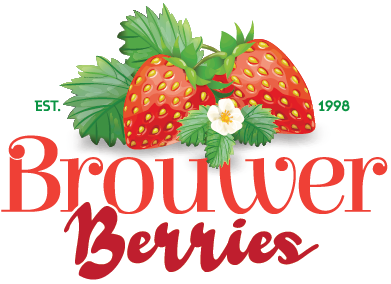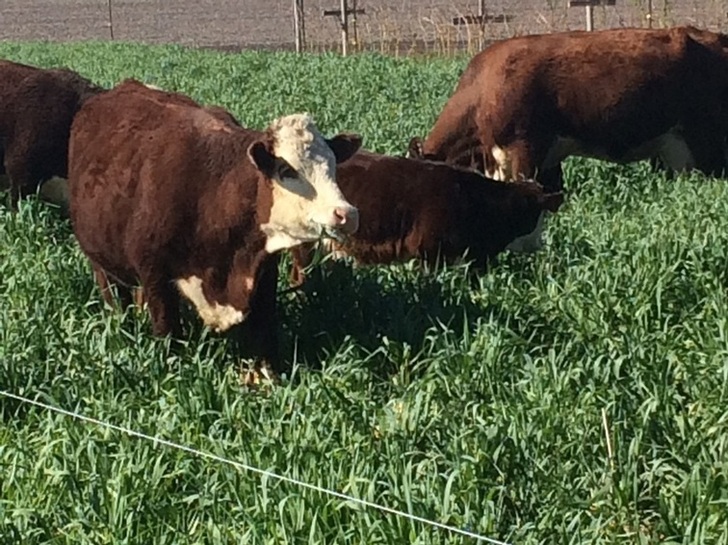
We were thrilled to receive a notice from the MN Department of Agriculture that our grant application for Livestock Investment has been approved! You probably know that we have consistently sold out of strawberries very quickly every year, and that this has led to our quest to grow more strawberries, while intentionally managing our soil health.
Two weather events in the past few years disrupted our plans to grow the strawberry farm. In 2012, there was a drought that nearly ruined the crop. In the spring of 2013, there was an 11 inch rain event that destroyed the soil structure of the area into which we needed to transplant. The excessive rain caused gullies and washouts. It swirled weed seeds into land depressions. It made spring planting agonizingly slow and gave a low transplant survival rate. Because strawberries are a perennial crop, both the drought and the 11 inch rain event negatively impacted our crop production for the next 3 years, and added urgency to our quest for better growing practices.
In 2013, we enrolled in the Central Lakes College Specialty Crops Management Program and learned about cover crops as a way to improve soil health. One instructor mentioned that recently, studies have shown that cattle grazing on land actually improves soil health, instead of ruining it as was believed for decades. Intrigued, Dan began obsessively watching Youtube seminars on grazing to improve soil health. For an entire winter, he researched, planned, and dreamed, buying his first cow/calf pair in the spring of 2015.
He installed fencing around all our strawberry fields, and planted cover crop in the land we were preparing for strawberry planting. The past two summers he has experimented with different cover crops, trying to figure out which ones work the best for grazing cows and soil health. He rotationally grazed the cows by moving them every night to a new small square of cover crop, to ensure maximum benefit from the grazing and hoofing action of the cows.
So far, the results shown by our regular soil tests have been very encouraging. Our soil organic matter and trace micronutrient levels have increased. Our  2016 baby strawberry plants, the first ones we planted into our cover cropped and grazed soil, look better than any plants we have ever had before going into the fall. We are very excited; impatiently waiting to see how many pounds per acre these plants will give us in 2017, compared to previous crops.
2016 baby strawberry plants, the first ones we planted into our cover cropped and grazed soil, look better than any plants we have ever had before going into the fall. We are very excited; impatiently waiting to see how many pounds per acre these plants will give us in 2017, compared to previous crops.
Incorporating livestock into a specialty crops rotation is unique. People around the state are curious about our methods and results. Thaddeus Mc Camant, our specialty crops advisor and a professor at Central Lakes College, says that we are only the 3rd specialty crops grower using livestock. Rick Reimer, director of the Kandiyohi Soil and Water Conservation District was so intrigued this summer that he discussed it with Gary Wyatt at the U of MN Extension services and they brought out a tour group of 15 new state conservation employees for the purpose of giving them ideas to take back to their counties.
Unfortunately, the old red barn on the farm place is falling apart, and our livestock herd of four Herefords, now an integral part of our soil management, was not well sheltered last winter. Our first Hereford cow had a still birth in that old barn. With the proceeds from the 2016 crop, Dan built the first half of a new pole barn for winter livestock shelter and straw storage. We plan to complete the second half of this new barn in the fall of 2017. He will extend the cattle fencing system around four more acres that we are changing from conventional crop to part of our strawberry, livestock and cover crop rotation.
Two of our cows had calves this winter, a third is due any day. This is good, since we intend to double our strawberry and cover crop acreage next spring. Doubling the size of our barn before the winter of 2017 will be necessary to properly shelter and care for the increased herd.
Hopefully, with a healthy herd and healthy soil, we will be able to increase our strawberry pounds per acre, while minimizing the use of fertilizers. Thank-you to the state of MN for supporting our efforts to improve our livestock facilities; a new piece of the puzzle for our unique specialty crops farm!


Hi, this is very interesting! I am curious, how do you remove the cover crop prior to transplanting new strawberry plants?
I live not too far from you on a small horse farm.
We have an eco-weeder that we can pull behind our tractor. The fingers of the weeder can be set to a height to pull the straw off the plants and into the strawberry paths without damaging the plants. It isn’t a perfect system, so we follow behind with pitchforks to make sure the plants have had enough straw removed and that the paths are covered evenly so that weeds don’t grow in our paths.